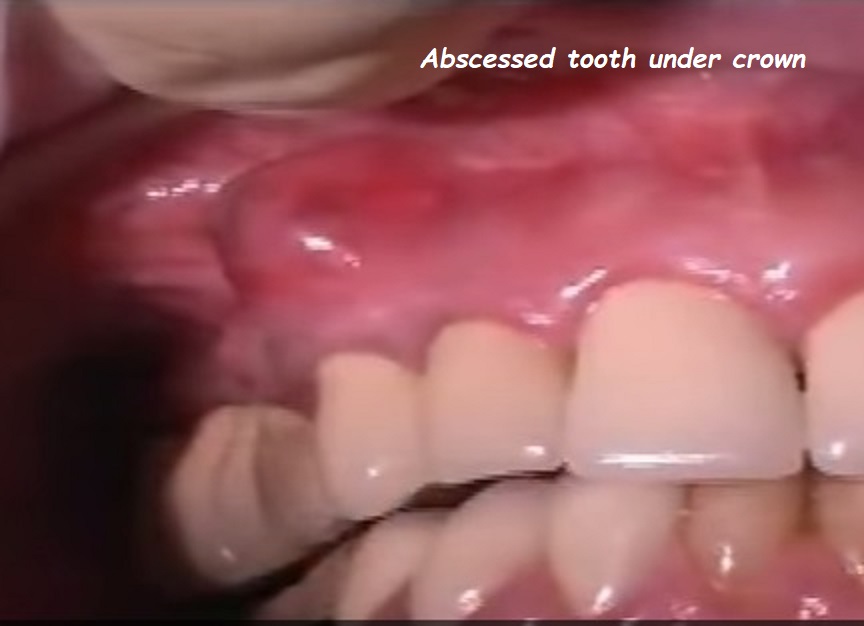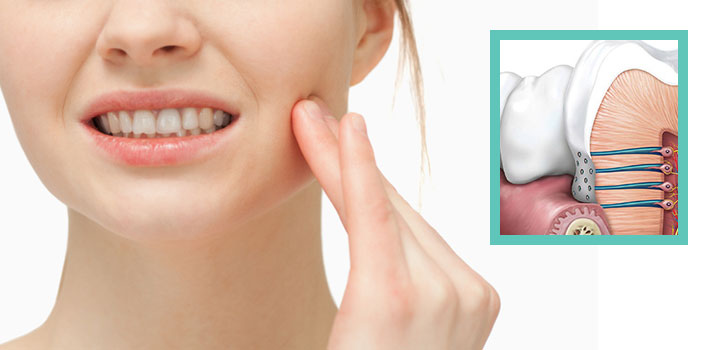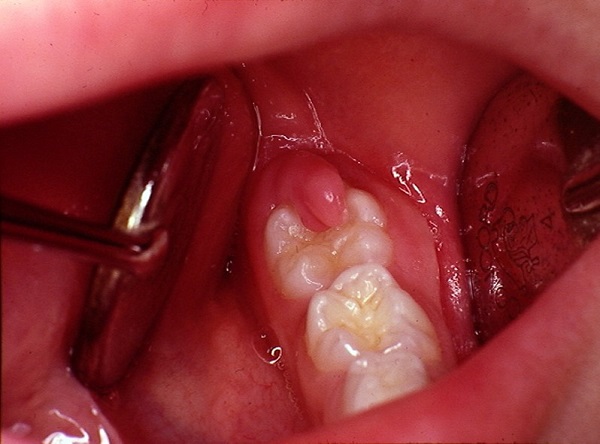Abscessed tooth under crown

Abscessed Tooth Under a Crown: Causes, Symptoms, Treatment, and Prevention
An abscessed tooth is a serious dental issue that occurs when a bacterial infection leads to a pocket of pus forming within the tooth or in the surrounding tissues. When this happens under a crown, it can be particularly concerning, as the crown is meant to protect the tooth from further damage. An abscessed tooth under a crown can cause intense pain, swelling, and other complications that require prompt treatment. In this guide, we’ll explore the causes, symptoms, treatment options, and prevention strategies for dealing with an abscessed tooth under a crown.
What Is an Abscessed Tooth?
An abscessed tooth is an infection that originates from the tooth’s pulp—the innermost part of the tooth containing nerves and blood vessels—or from the surrounding tissues, such as the gums or bone. The infection typically leads to the formation of a pus-filled pocket, known as an abscess, which can cause significant pain and swelling. If left untreated, the infection can spread to other parts of the body, leading to serious health complications.
When an abscess develops under a crown, it indicates that the tooth beneath the crown has become infected, despite the crown’s protective role. This situation requires immediate dental attention to prevent the infection from worsening.
Causes of an Abscessed Tooth Under a Crown
There are several reasons why an abscess might develop under a crown. Understanding these causes can help you take steps to prevent this painful condition:
1. Decay Under the Crown
One of the most common causes of an abscessed tooth under a crown is tooth decay. Even though a crown is designed to protect the tooth, decay can still occur at the margin where the crown meets the natural tooth. Over time, bacteria can infiltrate this area, leading to decay that can penetrate deeper into the tooth and eventually reach the pulp, causing an infection.
- Why It Happens: Poor oral hygiene, inadequate cleaning around the crown, or a poorly fitting crown can create gaps where bacteria can enter and cause decay.
- Signs to Watch For: Increased sensitivity around the crown, discoloration near the gumline, and bad breath can be early signs of decay under a crown.
2. Previous Root Canal Failure
If the tooth under the crown has previously undergone a root canal, there’s a possibility that the root canal treatment may have failed, leading to a persistent infection. This can result in the formation of an abscess if the infection was not entirely eradicated during the initial treatment.
- Why It Happens: Incomplete removal of infected tissue, missed root canals, or re-infection can lead to the failure of a root canal treatment.
- Signs to Watch For: Persistent pain, swelling, or discomfort in the tooth that had a root canal, even after the crown was placed, could indicate a failed root canal.
3. Cracks or Fractures in the Tooth
A crack or fracture in the tooth beneath the crown can allow bacteria to enter the tooth and cause an infection. Cracks can develop due to trauma, grinding of teeth (bruxism), or simply the natural wear and tear over time.
- Why It Happens: Pressure from chewing, especially on hard foods, or accidents can cause the tooth to crack or fracture, compromising its integrity.
- Signs to Watch For: Sharp pain when biting or chewing, sensitivity to temperature changes, and pain that comes and goes could suggest a crack in the tooth under the crown.
4. Gum Disease
Advanced gum disease (periodontitis) can cause the gums to recede and expose the roots of the teeth, including those covered by crowns. This exposure can lead to bacterial infiltration and infection, resulting in an abscess.
- Why It Happens: Poor oral hygiene, smoking, and certain health conditions can increase the risk of gum disease, leading to gum recession and infection.
- Signs to Watch For: Red, swollen gums, bleeding when brushing, and receding gums around the crown are indicators of gum disease.
Symptoms of an Abscessed Tooth Under a Crown
Recognizing the symptoms of an abscessed tooth under a crown is crucial for seeking timely treatment. Here are the common signs that may indicate an abscess:
1. Severe, Persistent Pain
One of the most common symptoms of an abscessed tooth under a crown is severe, persistent pain. The pain may be throbbing, sharp, or constant, and it often worsens when chewing, biting, or applying pressure to the affected tooth.
2. Swelling and Redness
Swelling in the gums, face, or jaw near the affected tooth is another sign of an abscess. The gums around the tooth may also appear red and inflamed. In some cases, you may notice a visible bump or pimple on the gum near the tooth, which could be an abscess draining pus.
3. Sensitivity to Hot and Cold
An abscessed tooth may become extremely sensitive to hot and cold temperatures. Drinking hot beverages or eating cold foods may trigger intense pain or discomfort in the affected tooth.
4. Bad Taste or Odor
If the abscess is draining, you may notice a foul taste in your mouth or persistent bad breath. This is due to the pus being released from the infection.
5. Fever and General Malaise
In severe cases, the infection from an abscessed tooth can spread, leading to systemic symptoms such as fever, fatigue, and a general feeling of being unwell. If you experience these symptoms, it’s important to seek medical attention immediately.
6. Loose Crown
An abscess or the underlying infection can sometimes cause the crown to become loose. If your crown feels unstable or moves when you bite down, it could be a sign that there’s an issue beneath it.
Treatment Options for an Abscessed Tooth Under a Crown
If you suspect that you have an abscessed tooth under a crown, it’s essential to see a dentist as soon as possible. Delaying treatment can lead to more serious complications. Here are the common treatment options:
1. Antibiotics
If the infection is severe, your dentist may prescribe antibiotics to help control the infection and prevent it from spreading. However, antibiotics alone are not a permanent solution—they will help manage the infection but won’t address the root cause.
- When Used: Antibiotics are often prescribed before or after other dental procedures to reduce the infection and inflammation.
- Limitation: Antibiotics are a temporary measure and must be combined with other treatments to fully resolve the issue.
2. Root Canal Therapy
If the abscess is caused by an infection inside the tooth, your dentist may recommend root canal therapy. During a root canal, the dentist removes the infected pulp, cleans and disinfects the inside of the tooth, and then seals it. The tooth is then restored with a new crown if necessary.
- Procedure: The dentist drills into the crown to access the infected pulp, removes the infection, and fills the space with a special material to prevent re-infection.
- Outcome: A successful root canal can save the tooth and eliminate the infection, allowing you to keep your natural tooth under the crown.
3. Crown Removal and Replacement
In some cases, the existing crown may need to be removed to treat the underlying tooth. After treating the infection or addressing the decay, your dentist will place a new crown to restore the tooth’s function and appearance.
- Procedure: The dentist removes the old crown, treats the tooth as needed, and then places a new custom-made crown.
- Outcome: This approach addresses both the infection and any issues with the original crown, providing a long-term solution.
4. Tooth Extraction
If the tooth is severely damaged or the infection cannot be resolved with root canal therapy, your dentist may recommend extracting the tooth. After extraction, options like a dental implant, bridge, or partial denture can replace the missing tooth.
- Procedure: The dentist removes the infected tooth, allowing the infection to be fully eradicated. Once healed, the area can be restored with a replacement tooth.
- Outcome: While tooth extraction is a last resort, it effectively eliminates the source of the infection and prevents further complications.
5. Incision and Drainage
In some cases, your dentist may need to make an incision in the gum to drain the abscess and relieve pain and pressure. This procedure is often used in conjunction with other treatments, such as root canal therapy or antibiotics.
- Procedure: The dentist makes a small cut in the gum to allow the pus to drain, reducing swelling and pain.
- Outcome: Drainage provides immediate relief but must be followed by further treatment to address the underlying infection.
Preventing an Abscessed Tooth Under a Crown
Preventing an abscessed tooth under a crown involves a combination of good oral hygiene practices and regular dental care. Here’s how you can reduce your risk:
1. Maintain Excellent Oral Hygiene
Brush your teeth at least twice a day with fluoride toothpaste and floss daily to remove plaque and food particles from between your teeth and around your crown. This helps prevent decay and gum disease, which can lead to an abscess.
- Tip: Consider using an antibacterial mouthwash to help reduce bacteria and maintain healthy gums.
2. Regular Dental Check-Ups
Visit your dentist regularly for check-ups and professional cleanings. During these visits, your dentist can monitor the condition of your crowns and detect any early signs of decay or infection.
- Tip: If you notice any changes in your crown, such as increased sensitivity, looseness, or discomfort, contact your dentist immediately.
3. Avoid Hard Foods
Avoid chewing on hard foods, such as ice, hard candy, or nuts, which can crack or damage your crown. A cracked crown can allow bacteria to enter the tooth and lead to an infection.
- Tip: If you grind your teeth at night, talk to your dentist about getting a night guard to protect your crowns and natural teeth.
4. Address Gum Disease Promptly
If you have gum disease, work with your dentist to manage and treat it. Untreated gum disease can lead to gum recession, exposing the roots of your teeth and increasing the risk of infection.
- Tip: Regular cleanings and scaling and root planing (deep cleaning) can help keep gum disease under control and prevent complications with your crowns.
5. Monitor Root Canal Treated Teeth
If you have had a root canal under a crown, it’s important to monitor the tooth for any signs of re-infection, such as pain, swelling, or sensitivity. Regular dental visits can help ensure that the root canal remains successful.
- Tip: Your dentist may take periodic X-rays to check the health of the root canal and surrounding bone.
Frequently Asked Questions About Abscessed Teeth Under Crowns
Q: Can a tooth with a crown get an abscess?
A: Yes, a tooth with a crown can still develop an abscess. This can happen if decay occurs under the crown, if a previous root canal fails, or if there’s a crack in the tooth.
Q: How can I tell if I have an abscessed tooth under my crown?
A: Symptoms of an abscessed tooth under a crown include severe pain, swelling, redness in the gums, sensitivity to hot and cold, and a bad taste in the mouth. If you experience these symptoms, contact your dentist immediately.
Q: Can an abscessed tooth under a crown heal on its own?
A: No, an abscessed tooth will not heal on its own. It requires prompt treatment to prevent the infection from spreading and causing further complications.
Q: How is an abscessed tooth under a crown treated?
A: Treatment options include antibiotics, root canal therapy, crown removal and replacement, tooth extraction, and incision and drainage. The appropriate treatment depends on the severity of the infection and the condition of the tooth.
Q: Can I prevent an abscessed tooth under a crown?
A: Yes, you can reduce your risk by maintaining good oral hygiene, visiting your dentist regularly, and addressing any signs of gum disease or decay promptly.
Conclusion: Taking Action Against an Abscessed Tooth Under a Crown
An abscessed tooth under a crown is a serious dental issue that requires prompt attention. If you experience symptoms like severe pain, swelling, or sensitivity, it’s important to see your dentist as soon as possible. Early treatment can help save the tooth, eliminate the infection, and prevent further complications.
By understanding the causes of an abscessed tooth under a crown and taking preventive measures, such as maintaining good oral hygiene and visiting your dentist regularly, you can protect your dental health and avoid the pain and discomfort of an abscess. With the right care, your crowns can continue to serve you well, keeping your smile healthy and strong.









